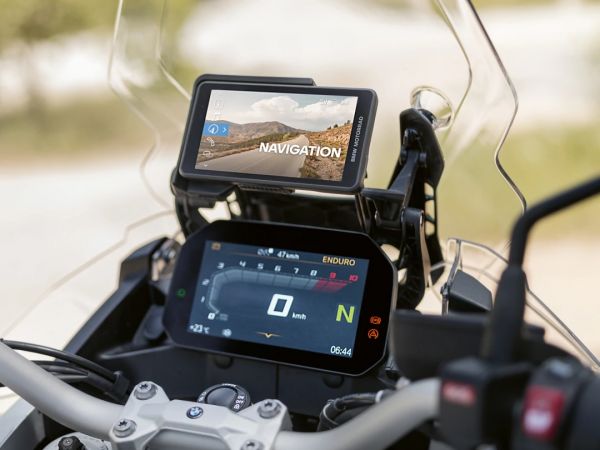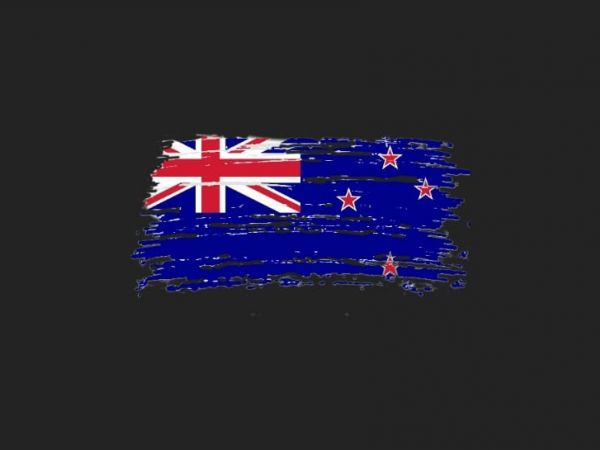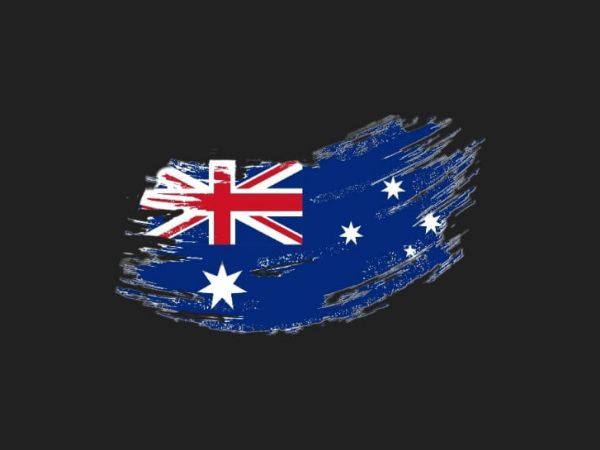Curiosities and interesting facts about Albania
Curiosities and interesting facts about Albania
Category: Travel Recommendations
More than 10 good reasons why Albania is worth visiting!
It is a destination that everyone should visit at least once in their lifetime: Albania. One of Europe's last hidden gems, this small country is well worth a visit. From the coast to the enchanting coastal villages, from the vibrant capital Tirana to the breathtaking mountain landscapes, you have a view of the sea.
1. It is still a relatively unexplored country!
How much do you really know about Albanian country and culture? Probably not much. You may hear about the beautiful Albanian Riviera and its beaches, but overall it's largely unexplored. That's because it used to have a bad reputation for being insecure and unstable, and the infrastructure isn't the best either.
Things are going to change and have already changed. This country looks positive in its future.
2. The people there!
Albanians are friendly people, everyone we met. You don't even have to get the local's attention. Albanians are curious and love to talk. Being able to speak German is a big plus, especially when talking to older men, as many of them have worked in Germany before. And the youth is willing to learn English.
So come on, let's chat!
3. Albania's beaches!
Albanian beaches are very beautiful, almost fantastic and there is something for everyone, whether you prefer sandy bays, rocky beaches, or secluded or busy beaches. Albania has them all. Just like its famous neighbours Greece and Montenegro. The most beautiful stretch of coast in the country is called the Albanian Riviera and it starts behind the Llogara Pass, a mountain pass near the city of Vlora, and ends in Ksamil, a small town near the Greek border. Come on, let's find out! A place or region where you never thought you would find something so beautiful in southern Europe.
4. Traditional food!
Byrek, pita, yogurt dip, sandwiches, olives, and cheese - Albanian food is simply delicious. The country has one of the best street food scenes in Europe and if you'd rather sit at a table, don't worry: Tirana has many excellent restaurants offering typical and international cuisine as well as vegetarian options.
Here are some Albanian dishes you should definitely try: Fëgesë, Tavë Kosi, Perime Në Scarë, Burek, and Speca me Glizë.
5. The Museums of Tirana!
Undoubtedly one of the liveliest capitals in the Balkans, Tirana has many great museums and art galleries that everyone should add to their must-see list in Albania. A must-see is the Bunk'Art, a hidden bunker on the outskirts of Tirana. Places of interest in the city center include Bunk'Art2, a memorial to the victims of the communist regime, and the House of Leaves, the former headquarters of dictator Hoxha's secret police. Don't make excuses and explore the culture!
6. Albania's Archaeology!
As if that weren't enough, the beautiful beaches and mountains aren't enough, Albania is also home to fabulous archaeological towns like Butrint and Apollonia and charming villages like Berat, Gijrokaster, and Korça that seem straight out of a fairy tale. Let your fantasies roam.
7. Albanians love coffee!
I am a Colombian, there is no discussion about that. I understand that because Albanians love coffee! You can't say you've been to Albania without having a Tirana coffee. Drinking coffee here is not just a thing, it's a way of life, like walking around downtown Tirana.
8. The capital Tirana!
The Albanian capital is one of the least visited in Europe. It is also one of the few capitals where Islam is not the dominant religion. According to statistics, 70 percent of Albanians are of the Islamic faith, though it is estimated that only about 4 percent of the population are practicing Muslims. This is another reason why the culture here is exciting and unique. Tirana offers the best baklava in Albania and a lively nightlife.
9. Albanian Alps!
One of the most beautiful and least visited parts of the country is the north. Almost everyone who visits Albania prefers to spend time in the capital and then head south. But if you have more time, don't miss the opportunity to spend a few days up north. The mountains offer spectacular hiking trails, breathtaking panoramas, and beautiful nature. There is a lot to discover and things worth seeing that please the eyes.
10. The prices!
Would you like to travel but are not sure? I have news for you. Visiting Albania means you can indulge yourself without breaking your budget. Prices are half what they are in the rest of Europe, so it's easy to get good value for money. The country offers the opportunity to see a lot, stay in boutique hotels, and eat in excellent gourmet restaurants for just a few euros. How is it possible not to visit and enjoy Albania?
11. The climate!
We can say that Albania has a temperate and very varied climate. With a Mediterranean climate in the coastal areas of the Adriatic and Ionian Seas. A continental climate in mountainous areas with lower temperatures and abundant rainfall. So, in the interior of Albania, there are low temperatures due to the continental air masses from the Balkans.
12. Curiosities about Albania!
- The national hero of Albania is the Christian soldier Skanderbeg who resisted the Ottoman invasion in the 15th century.
- Despite its small size, Albania impresses with a great variety of landscapes. In them, we find mountains in the north, pristine beaches, and lakes that reach into neighbouring countries.
- Albania means white in Latin and refers to the snow on the mountains
- Mother Teresa of Calcutta was of Albanian origin.
- The capital's airport is called Mother Teresa International Airport. In honour of Mother Teresa of Calcutta.
- Historically, unlike its surrounding countries, Albania is not Slavic, but its ethnic origin has its roots in the Illyrian people, a group related to the ancient Greeks. With the invasion of the Turks, Albania was then under the cultural influence of the Ottoman Empire for many centuries.
- Albania is currently a member of NATO, the United Nations, the OSZE, the Organization for Islamic Cooperation, the Council of Europe, and the World Trade Organization, and a founding member of the Union for the Mediterranean.
- The first radio broadcast was produced by Albanian Radio and Television in 1938.
- 70% of the population are Muslims, only 10% are Catholics and the rest are Orthodox Christians.
- The Muslim religion is dominant in Albania, making it the only European country where this religion is practiced.
- It was the first state in the world to declare itself an atheist.
- The capital, Tirana, is the only medium-sized city in the country.
- Albania's only international airport is located in Tirana, the capital.
- The fourth republic established in the country is the one that exists today. It was originally founded on April 29, 1991.
- In 2011, Albania was found to rank sixth in the world in terms of literacy.
- Albania has a long tradition of wine growing. In this country we find the oldest seeds, which are between 4,000 and 6,000 years old.
- Albania has 697 natural monuments and 14 national parks.
- Mount Korab is the highest mountain in Albania with a height of 2,764 meters.
- The largest lake in southern Europe is Lake Skadar which is also located in Albania.
- Lake Ohrid is the oldest in Europe and the world and is located in Albania.
- The largest oil reserves in Europe are located in the Balkan region of Albania.
- Albania is the world's leading producer and exporter of chromium.
- Gjirokastra is a city of Ottoman origin and has been declared a World Heritage Site by UNESCO.
- More Albanians live outside Albania than within its own borders.
- Albanians love Italy, and most tourists are Italians.
- Football is the most popular sport in Albania, in addition to the fact that they qualified for a major Eurocup competition for the first time in 2016.
- There are more Mercedes-Benz vehicles in Albania than in Germany.
- Taxi drivers are kind, persistent, and persistent people.
- The fastest and cheapest internet in Europe is the one in Albania.
- Albanians shake their heads when saying “yes” and nod when saying “no”.
- There are no McDonald's restaurants in Albania.
- Bars do not serve food, only beer, other types of alcoholic beverages, some soft drinks, tea, and coffee.
- Albanians eat a lot of bread and other bread-based foods.
- In Albania, pumpkins are used not only in the kitchen but also at exhibitions and as gifts.
- Albania's tourism potential is very real. This small country has a predominantly rural population with many archaeological riches and a Mediterranean climate with mild temperatures all year round and hot and sunny summers hovering around 40 degrees Celsius.
13. What does the Albanian flag symbolize?
History, the national flag of Albania consists of a two-headed black eagle on a rectangular red background. This flag was introduced on April 17, 1992. The word used to describe Albania in the local language is 'Shapiperia', which translates to 'land of the eagles'.
Background The colour red in the Albanian flag symbolizes bravery, strength, and courage.
14. How many beaches does Albania have?
Albania has around 200 beaches along its coast. These are spread over an 800 km coastline. These include fine sandy to rocky beaches, some with crystal clear water. Who could imagine 200 beaches?
15. Albanian traditions!
Beliefs, festivals, customs, clothing, and food. Albanians are a people native to the Balkans living in southern Europe. They call themselves Shqiptarë. Albanians live in ethnically compact settlements over large areas, primarily in Albania, Kosovo, and Macedonia, but also in Montenegro and Greece. The traditions of Albania are unique and diverse. If you are interested in getting to know them in-depth, tour the country.
16. Beliefs and rituals!
- Albania is home to three religions:
- Roman Catholicism,
- Greek Orthodoxy and
- Islam.
Albanians have never had a national religion with which to identify as a people. Religious zeal is extremely rare and religious extremism is virtually unknown.
17. Festivals and celebrations in Albania!
It is a mark of national pride that Albania's holiday and festival calendar is geared towards showcasing its traditional handicraft scene. In fact, the performing arts are important to Albanians, and their traditions are said to be as alive today as they were a century ago. But that doesn't mean Albanians are stuck in the past. The National Festival of Urban Folk Songs, for example, seeks to interpret a modern interpretation of traditional music that is more relevant today than ever. At the end of summer, there is the biggest avalanche of joy and beer in Albania. So, ready to watch and enjoy?
18. National Festival of Urban Folk Songs!
Every year in March it is organized as a tribute to the popular songs in the country, performed in the cities and towns across Albania.
19. Korça Beer Festival!
Regarded as the largest public festival in Albania, it offers Albanians a chance to let off steam for four consecutive nights of celebration throughout August and spend four days celebrating the drink Korça. Korca is Albania's oldest and most popular beer brand, named after the city where the event is held every August. Traditional food, live music with some international bands and lots of dancing are an important part of the menu. Oh my god!! As we say in my country Colombia when something surprises us, jajaja
20. Gjirokaster folk festival!
Around September, every four years, this folk festival takes place in southern Albania. First organized in 1968, the event aims to bring together an interesting selection of folk musicians and artists from across the Balkans and around the world to perform. And that in front of a large audience. The last event attracted more than 1,000 performers, including the iso polyphonic style of Albanian folk singing, which has been declared an “Intangible Cultural Heritage” by UNESCO.
That leaves me a little speechless too!
21. International Festival!
International Festival of Modern and Contemporary Dance. The aim is to bring aspects of international contemporary dance closer to Albania and to demonstrate innovative forms of expression every year in Durrës in October.
22. Tirana International Film Festival!
Every year in November it is the first of its kind in Albania. The festival, which is a nationwide event, has been sponsored and endorsed by various international names from across Europe.
23. Albanian customs!
Albanians are hospitable. Even more so than in the rest of the Balkans, older men expect respect for their age. The men in the family must be given special respect. Shake hands and don't discuss topics like religion and politics. In Albania, it's customary to kiss men your age or younger (if you're a man) on the cheeks, even if you're meeting them for the first time.
This applies in particular to the regions of Fier, Tepelena, Vlora, and Gjirokastra. In northern Albania, they simply touch their cheeks but don't kiss them. Women kiss too, sometimes on the first meeting, but men and women don't kiss on the cheek unless they've been friends for a long time. However, cheek kisses are common among 15-20-year-olds.
If the family has a baby, always ask for a visit, and don't forget to add a compliment. If you are a man or woman with a group of men, do not compliment the women unless they are under the age of 10-12.
Albanians love to dance, especially during weddings. You may not know the traditional dances but try to learn.
24. Albanian clothing!
Like the other Balkan countries, Albania has its own clothing industry. There are more than 200 different types of traditional costumes in Albania, which is due to the division of Albanian principles into ancient and medieval times. The traditional costume of southern Albanian women consists of a blouse with wide fabric cuffs, matched with an embroidered waistcoat.
A pleated petticoat under the skirt and an elaborately embroidered apron and sash completes the ensemble. Gold chains fall from the neckline, are gathered at the sash, and tucked into a pocket on the right side of the skirt. A shawl covers the woman's hair. In northern Albania, the sleeves of the blouse are wide and have lace embroidery along the edges. The embroidery on the apron is elaborate but differs from the style of southern Albanian women.
Gold coins are worn on a headband and multiple necklace strands adorn the bodice of the dress. In Albanian cities, conservative Western-style clothing is more common. However, the Albanians are modest. Neither Albanian men nor women wear shorts or other daring clothing. Traditional clothing is mostly seen in theatrical or folk-dance performances in Albanian cities.
25. Albanian food, sweets, and drinks!
Albanian dishes have their roots in the former Ottoman Empire. The combination of fertile land, proximity to the sea, and blurred cultural lines with its neighbours has resulted in a modern cuisine that is both diverse and understated.
- Soup: In summer, a cold soup called tarator is served. It consists of vinegar, cucumber, garlic, walnut, fennel, and spices. In Albanian winter there are many stews to choose from. Try Sataraš, a lighter stew made with tomatoes, onions, and peppers. There is also meat and onion stew (Chumlek) and meat with potatoes (Guvech).
- Savory Cakes: They are the favourites in Albania. And they're just as filling as their stews and delicious. Try the Byrek made with feta cabbage, spinach, tomatoes, and meat, all layered in a flavorful filo pastry.
- Kungullur: It's a filo pastry and pumpkin, butter, salt, or sugar.
- Kaklaasarem: It is a traditional Kosovo food, a layered empty pita dish covered with garlic and yogurt, served hot. It's a typical lunch for Albanians.
- Sweets and desserts: Albanians definitely have a sweet tooth, and you will find that most of them enjoy dessert with their meals. There are numerous fruit and cream dishes, as well as biscuits and Baklava, wheat (ash) or rice pudding (Sultash), fried batter in rich syrup (Tollumba), or candied fruit (Oshaf). Boza, a fermented malt drink, usually accompanies desserts.
- Halva: This is flour or semolina with a lot of sugar that is cooked into one of the country's most popular sweets. Sweet or savory dumpling variations are just as popular.
- Fruit: Fruit is enjoyed all year round in Albania - eat it fresh or enjoy it with jam or compote. Albanian cherries are well known, as are pears, peaches, and apples.
I'm already getting an appetite!
26. Beverages, spirits
Unfortunately, Albania is not known for its wines, which is a shame. They have an excellent bouquet and aroma. The advantage is that they are also inexpensive as they are not yet popular in the international market. Look for red wines like Shesh and Zi made in Durres and Tirana, Mavrod from Leskovik, and Calmet from Shkoder and Peshop. For white wines, look out for Riesling from Durrës and Shesh and Bardhe from Tirana. Local beer brands include Kaon, Norga, Stela, and Tirana. Skandenberg, a high-quality cognac, is also made in Albania.
The national drink is undoubtedly grape brandy or raki. As for non-alcoholic drinks, Albanians prefer Turkish espresso and coffee. The Balkan presentation is called Cafe Turke and is made by brewing soil and sugar together.
Mariana A. R.
TAGS
vlora tollumba tirana tepelena sultash shqiptarë sataraš qark fier ottoman invasion mount korab mother teresa international airport land of the eagles korça beer guvech gjirokastër national folklore festival festival lake ohrid durrës chumlek balkans albanian cuisineShare Your Thoughts
Share your experiences, questions, or suggestions!
Comments from Fellow Riders
Nobody has commented yet – your thoughts?
Blog categories
Moto Tours

* Balkan-Italy Adventure Tour
Approx. 2340 miles!
14 riding days through 5 countries!
15 overnight stays + 2 overnight stays on a ferry!

* Balkan-Carpathians-Albanian Alps Tour 2
Approx. 3138 miles!
21 riding days through 7 countries!
27 overnight stays!

* Balkan-Romania Adventure Tour
Approx. 2220 miles!
11 riding days through 5 countries!
12 overnight stays!

* Balkan-Carpathians-Albanian Alps Tour 1
Approx. 2520 miles!
15 riding days through 7 countries!
18 overnight stays!

* Croatia-Italy-France Adventure Tour
Approx. 1990 miles!
15 riding days through 4 countries!
17 overnight stays + 1 overnight stay on a ferry!

* Croatia-Sicily-Amalfi Coast Tour
Approx. 2730 miles!
18 riding days through 3 countries + Sicily!
21 overnight stays + 1 overnight stay on a ferry!

* New Zealand Adventure Tour
Approx. 4133 miles!
20 riding days through the South and North Island!
24 overnight stays + 1 overnight stay on a cruise!

Croatia - Route des Grandes Alpes, July 2025
2 Americans - 1 boy and 1 girl, 1 motorcycle - a BMW R1250GS, one motorcycle tour and one goal ...

Balkans - Romania Tour, June 2025
At the end of June 2025, the time had finally come. Between June 23 and June 25, all participants in this tour gradually arrived in Trogir.

Balkans - Italy Tour, May 2025
Together we covered about 3700 km, crossing the Adriatic twice, from Durrës to Bari and from Ancona to Split.

Money protection in the event of insolvency
Money Protection Certificate according to § 651r and § 651w of the Civil Code of the Federal Republic of Germany ...

Packing list for a motorcycle tour
Pack your things and get going...

Travel planning and navigation
The next vacation is just around the corner, hopefully, and you've decided to finally ...

Riding a motorcycle in a group or alone?
Riding a motorcycle in a group or riding alone? Are you worried about safety, contact with other people ...

The International Driving Permit
Understanding the International Driving Permit (IDP). A Key to Smooth Overseas Riding for ...

BMW Motorcycle ConnectedRide Navigator
The new BMW Motorcycle ConnectedRide Navigator ...

BMW-ConnectedRide Cradle and Connected App
Riders of new BMW models have several options for using information and entertainment ...

Traffic regulations in Oceania - New Zealand
What should be considered on a motorcycle tour through New Zealand?

Traffic regulations in Oceania - Australia
What should be considered on a motorcycle tour through Australia?















